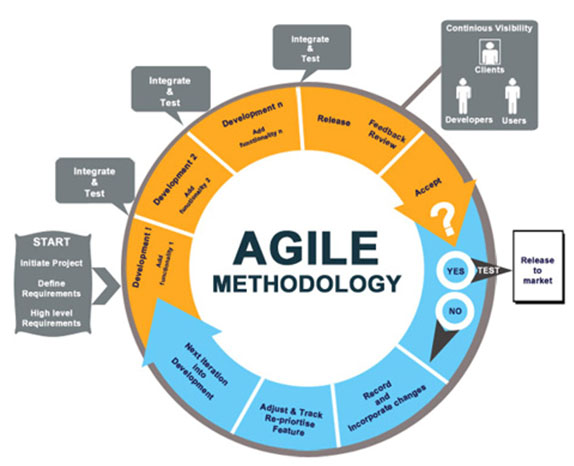It’s finally here! After months of hard work and patience, your software masterpiece of a product release is ready now. You are more than eager to set the wheels in motion, but wait, are you safely locked and loaded? No one ever got a second chance to make the first impression. So, it’s about time you take the right steps towards a successful product release. What salient points does one need to check on to ensure a successful product release anyway? Read on as we spill the beans.
# 1 Assemble Your Resources
For any kind of rollout to phase out successfully, it’s important to ensure all resources needed to make the deployment possible are easily accessible. These resources may be materials, tools and even personnel needed to perform designated activities listed for a particular rollout.
Being obstacle – ready will help you go a long way. There may be instances when the resources become unavailable. A staff member may be on leave or is tending to another project or the desired tools may be unavailable. In such cases, you must be prepared with an alternative solution and continue with the release process. However, it is important to get an approval from the change management team before the rollout. The best way to mitigate issues cropping up due to resource crunch is to plan ahead of time. It is best to include staff vacations and holidays in the deployment schedule and consider adding a time buffer to avoid surprises due to sudden resource unavailability.
# 2 Clearly Communicate All Release Details
Your communication with stakeholders should have to do more than just generating awareness about the release or telling everyone how important it is for the business. Shift your focus to developing organizational readiness. Ensure to communicate release-related information like release dates and plan, places where they can find any training courses (if required) and references where the support staff, users, and others involved in the release process can read more about the release. You may also want to do a Q & A session to answer any queries. Releasing a detailed FAQ doc is also a good alternative. Also, provide users with a list of actions they may need to carry out to prepare their workstations before and after the release. A product change log, emails, blog posts, videos or customer tutorials are some good ways of doing this.
#3 Establish a Regular Release Cycle
A release cycle is the heartbeat of the product release process. Thus, it becomes essential to determine how often should the code be pushed into production. For instance, GitHub deploys code multiple times in a day, as soon as it is ready, and so does Quora. This helps in establishing a timetable for when certain functionality will be available for the stakeholders. Besides, it creates a set routine where all the teams (engineering, marketing etc.) can align. However, it is important to have an accurate release cycle, and not some random number you can work with at the dinner table. Before you announce it, test it. An inaccurate release cycle is the most common cause of a failed release process.
#4 Plan and Implement an Early Release Infrastructure
Developing a software isn’t enough. It is also crucial to ensure that users can access it easily. That’s where a release infrastructure comes into play. Release infrastructure is an often temporary setup put in place to deploy a software and facilitate its use. Ideally, a release infrastructure comprises of hardware, storage, bandwidth, network connections, user profiles, licensing, access permissions, skills and human services. Planning out the release infrastructure at the initial stages helps in identifying any hidden bottlenecks like missing hardware or absent skills. Resolving them early will ensure that there isn’t any delay in software release.
# 5 Version Your Releases
Releasing product without versioning can make it difficult to track issues and deal with user expectations. Everyone knows that releasing a product’s beta version means it is somewhere between the two phases of being ‘functional and hideous’ to ‘polished and ready to go’. So, users approach the product with that amount of caution. Not marking your product as a beta version, is akin to losing that ‘starter-sympathy’ from enthusiastic users.
Further, if you release a fixed release and don’t version it either, it won’t be clear which release is affected. Using a standardized major and minor release version numbers helps manage expectations about the scale of change. Going from 3.0 to 4.0 means there is a substantial change in the software, while upgrading from 3.1 to 3.2 depicts small changes and enhancements.
# 6 Test Your Release Yourself
In a rush to release the product in time, you might miss a step, and the release may stop working. This can be easily avoided. Just download the new release and skim through the process of building, installing and testing it. This will help in ensuring that the download links are working and the software is ready to use.
# 7 Don’t Get Caught Up with Making the Product Perfect
While it is important to ready your software for release, it isn’t necessary to make it perfect. To be honest, a perfect software is a myth. There will always be some scope for tweaking or adding and updating features. The key here is expectation management. Have it all figured out – what the software can and cannot do and what more needs to be done from your end. Over time, you may realize how some features you were initially fretting over may not be so relevant afterall. Here’s Nick Barnes in an editorial for Nature magazine, speaking on when it’s okay to release your code.
What are your routine checkups before approaching a product release? Let us know in the comments below.




